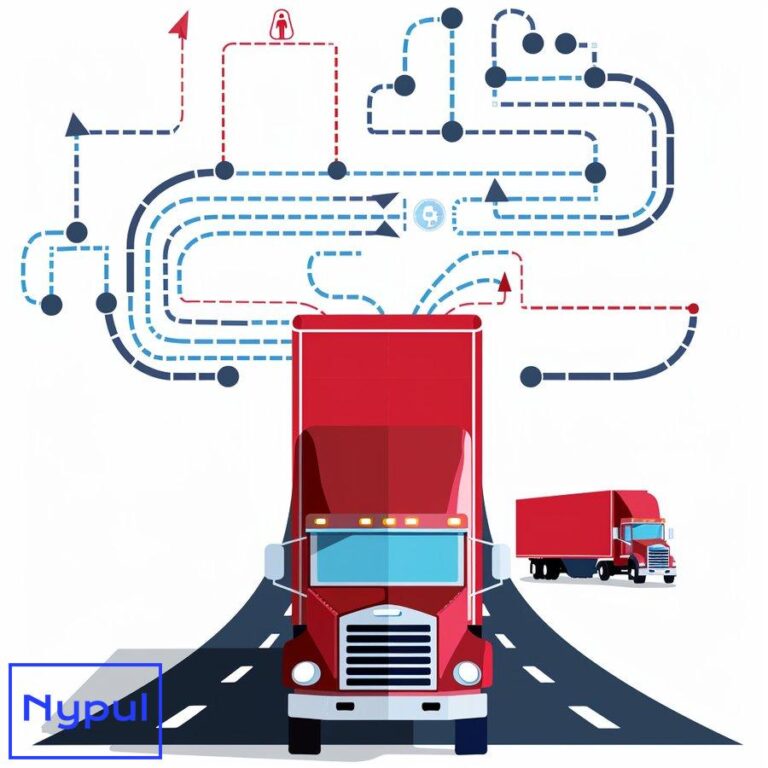What Is Documentation in Freight Forwarding
What is freight forwarding documentation?
Freight forwarding documentation encompasses the collection of essential papers and records that facilitate the smooth movement of goods across international borders. These documents serve as the backbone of the logistics process, providing crucial information about the shipment, its origin, destination, contents, and value. Freight forwarders, acting as intermediaries between shippers and carriers, are responsible for managing this complex web of paperwork to ensure compliance with regulations and efficient cargo transportation.

The scope of freight forwarding documentation extends beyond mere paperwork. It represents a critical communication tool that connects various stakeholders in the supply chain, including shippers, consignees, customs authorities, and transportation providers. Each document plays a specific role in the logistics journey, from initiating the shipment to its final delivery.
Key components of freight forwarding documentation:
Commercial documents: These include invoices, packing lists, and certificates of origin, which provide details about the goods being shipped and their commercial value.
Transport documents: Bills of lading, airway bills, and other carrier-specific documents that serve as contracts of carriage and receipts for the goods.
Customs documents: Import/export declarations, customs invoices, and other forms required by customs authorities for clearance purposes.
Insurance documents: Certificates of insurance that protect the cargo against loss or damage during transit.
Regulatory documents: Permits, licenses, and certificates required for specific types of goods, such as hazardous materials or perishables.
The complexity of freight forwarding documentation varies depending on factors such as the type of goods, mode of transport, origin and destination countries, and applicable trade agreements. A single international shipment may require dozens of different documents, each serving a unique purpose in the logistics chain.
Freight forwarders must possess in-depth knowledge of these documents and their requirements to ensure smooth cargo movement. They must also stay updated on changing regulations and documentation standards across different countries and trade lanes.
The evolution of freight forwarding documentation:
Traditionally, freight forwarding documentation relied heavily on paper-based processes. However, the industry has been gradually shifting towards digital documentation systems. This transition aims to improve efficiency, reduce errors, and enhance the speed of information exchange among stakeholders.
Electronic documentation platforms, such as electronic Bills of Lading (eBL) and digital customs declarations, are becoming increasingly prevalent. These digital solutions not only streamline the documentation process but also contribute to sustainability efforts by reducing paper usage.
Despite the move towards digitalization, many countries and stakeholders still require physical documents for certain processes. This hybrid approach necessitates freight forwarders to manage both digital and physical documentation systems effectively.
Understanding the intricacies of freight forwarding documentation is crucial for anyone involved in international trade. It forms the foundation for successful shipments, ensuring compliance with regulations, facilitating customs clearance, and enabling the smooth flow of goods across global supply chains.
Why is proper documentation crucial in freight forwarding?

Proper documentation in freight forwarding is not just a bureaucratic necessity; it is the lifeblood of international trade. The importance of accurate and complete documentation cannot be overstated, as it impacts every aspect of the shipping process and has far-reaching consequences for all parties involved.
Ensuring legal compliance:
One of the primary reasons for meticulous documentation is to ensure compliance with the myriad of laws and regulations governing international trade. Each country has its own set of rules regarding imports and exports, and failure to adhere to these regulations can result in severe penalties, including fines, shipment delays, or even legal action.
Proper documentation demonstrates that the shipment meets all legal requirements, including:
Customs regulations: Accurate customs declarations and supporting documents are essential for smooth clearance processes.
Trade agreements: Documentation proving compliance with free trade agreements can lead to reduced tariffs and duties.
Export controls: Proper licensing and permits for controlled goods prevent violations of international trade laws.
Facilitating smooth customs clearance:
Customs authorities rely heavily on the information provided in freight forwarding documents to assess duties, taxes, and determine if a shipment requires further inspection. Well-prepared documentation can significantly expedite the customs clearance process, reducing the risk of delays and additional costs.
Key benefits of proper documentation for customs clearance:
Faster processing: Accurate and complete documents allow customs officials to quickly review and clear shipments.
Reduced inspections: Consistent and reliable documentation builds trust with customs authorities, potentially leading to fewer physical inspections.
Avoiding penalties: Proper documentation prevents unintentional violations that could result in fines or shipment seizures.
Protecting financial interests:
Freight forwarding documentation plays a crucial role in protecting the financial interests of all parties involved in the transaction. Properly executed documents serve as legal evidence of the terms of sale, transfer of ownership, and liability for the goods.
Financial protection through documentation:
Letters of Credit: Accurate documentation is essential for securing payment through letters of credit, a common method of payment in international trade.
Insurance claims: In the event of loss or damage, proper documentation is crucial for filing and substantiating insurance claims.
Dispute resolution: Well-maintained records can help resolve disputes between parties regarding shipment terms or conditions.
Enhancing supply chain visibility:
Comprehensive documentation provides valuable data that enhances visibility throughout the supply chain. This information allows stakeholders to track shipments, anticipate potential issues, and make informed decisions.
Benefits of documentation for supply chain visibility:
Real-time tracking: Transport documents with detailed information enable accurate tracking of shipments.
Risk management: Historical documentation data can be analyzed to identify patterns and mitigate potential risks in future shipments.
Performance optimization: Accurate documentation allows for the evaluation of supply chain performance and identification of areas for improvement.
Facilitating communication among stakeholders:
Freight forwarding documentation serves as a common language among the various parties involved in international trade. It provides a standardized format for conveying critical information about the shipment, ensuring that all stakeholders are on the same page.
Stakeholders relying on freight forwarding documentation:
Shippers and consignees: Documentation provides clarity on shipment details, terms of sale, and delivery expectations.
Carriers: Transport documents outline the specifics of the cargo and any special handling requirements.
Customs authorities: Documentation supplies the necessary information for regulatory compliance and duty assessment.
Banks: Accurate documents are essential for facilitating international payments and financing.
Ensuring cargo safety and integrity:
Proper documentation plays a vital role in maintaining the safety and integrity of the cargo throughout its journey. Detailed packing lists, dangerous goods declarations, and temperature control records ensure that goods are handled appropriately at every stage of transport.
Documentation’s role in cargo safety:
Hazardous materials handling: Proper documentation ensures that dangerous goods are identified, packaged, and handled according to international safety standards.
Temperature-sensitive goods: Documentation of temperature requirements and monitoring logs helps maintain the integrity of perishable or temperature-sensitive products.
Cargo security: Documentation contributes to supply chain security initiatives, such as the Customs-Trade Partnership Against Terrorism (C-TPAT) program.
The crucial nature of proper documentation in freight forwarding cannot be overstated. It serves as the foundation for legal compliance, efficient customs clearance, financial protection, supply chain visibility, stakeholder communication, and cargo safety. Freight forwarders who excel in managing documentation not only ensure smooth shipments but also add significant value to their clients’ supply chains.
What are the essential documents required in freight forwarding?

Freight forwarding involves a complex array of documents, each serving a specific purpose in the international shipping process. Understanding these essential documents is crucial for anyone involved in global trade. Here’s a comprehensive overview of the key documents required in freight forwarding:
Commercial Documents
Commercial Invoice:
The commercial invoice is a fundamental document in international trade. It serves as a bill for the goods from the seller to the buyer and is used by customs authorities to determine the true value of the goods for assessment of duties and taxes.
Key information included:
– Seller and buyer details
– Description of goods
– Quantity
– Unit price and total value
– Incoterms
– Payment terms
Packing List:
The packing list provides a detailed inventory of the shipment contents. It is essential for customs clearance and helps in the physical handling of the cargo.
Important details:
– Number and type of packages
– Weight and dimensions of each package
– Description of goods in each package
– Marks and numbers on the packages
Certificate of Origin:
This document certifies the country where the goods were manufactured or processed. It is often required for customs clearance and can affect the application of preferential tariffs under trade agreements.
Types of Certificates of Origin:
– Non-preferential (general) Certificate of Origin
– Preferential Certificate of Origin (for countries with trade agreements)
Transport Documents
Bill of Lading (B/L):
The Bill of Lading is a crucial document in sea freight. It serves multiple functions: as a receipt for goods, evidence of the contract of carriage, and a document of title to the goods.
Types of Bills of Lading:
– Negotiable B/L
– Non-negotiable B/L (Sea Waybill)
– Multimodal B/L
Air Waybill (AWB):
For air freight shipments, the Air Waybill serves as a receipt for goods and evidence of the contract of carriage. Unlike the Bill of Lading, it is not a document of title.
Key features:
– Non-negotiable
– Governs the terms of carriage between the shipper and the airline
CMR (Road Consignment Note):
Used for road transport in Europe, the CMR is a standardized document that serves as a contract of carriage for goods transported by road.
Information included:
– Sender and receiver details
– Description of goods
– Instructions for customs and other formalities
Customs Documents
Customs Declaration:
This document provides detailed information about the shipment to customs authorities. It is used to calculate duties and taxes and ensure compliance with import/export regulations.
Common customs declaration forms:
– U.S. Customs Form 7501 (Entry Summary)
– EU Single Administrative Document (SAD)
Export License:
Required for certain goods that are subject to export controls. It grants permission to export specific items to particular destinations.
Types of export licenses:
– Individual Export License
– Open General Export License (OGEL)
Import License:
Similar to export licenses, import licenses may be required for certain goods entering a country. They are often used to regulate the import of sensitive or restricted items.
Regulatory Documents
Dangerous Goods Declaration:
Required for shipments containing hazardous materials. It provides detailed information about the nature of the dangerous goods and how they should be handled.
Key components:
– UN number and proper shipping name
– Hazard class
– Packing group
– Emergency contact information
Phytosanitary Certificate:
This document is required for shipments of plants and plant products. It certifies that the items have been inspected and are free from pests and diseases.
Issued by:
Government plant protection organizations in the exporting country
Insurance Documents
Insurance Certificate:
Provides evidence that the cargo is insured against loss or damage during transit. The type and extent of coverage can vary based on the terms agreed upon by the parties involved.
Information included:
– Type of coverage
– Insured value
– Policy number
– Covered perils
Financial Documents
Letter of Credit:
A financial document issued by a bank that guarantees payment to the seller if certain conditions are met. It is often used in international trade to mitigate risks associated with payment.
Types of Letters of Credit:
– Irrevocable Letter of Credit
– Confirmed Letter of Credit
– Revolving Letter of Credit
| Document Type | Primary Purpose | Issued By | Required For |
|---|---|---|---|
| Commercial Invoice | Billing, customs valuation | Seller | All shipments |
| Packing List | Inventory of shipment contents | Shipper | All shipments |
| Certificate of Origin | Certify country of manufacture | Chamber of Commerce or exporter | Customs clearance, preferential tariffs |
| Bill of Lading | Contract of carriage, title document | Carrier | Sea freight |
| Air Waybill | Contract of carriage | Airline or freight forwarder | Air freight |
| Customs Declaration | Declare goods for customs clearance | Importer or their agent | All international shipments |
| Export License | Permission to export controlled goods | Government agency | Restricted goods |
| Dangerous Goods Declaration | Declare hazardous materials | Shipper | Hazardous cargo |
| Insurance Certificate | Proof of cargo insurance | Insurance company | As required by contract or regulations |
| Letter of Credit | Payment guarantee | Issuing bank | As agreed between buyer and seller |
Understanding these essential documents is crucial for successful freight forwarding operations. Each document plays a specific role in the complex process of international shipping, ensuring legal compliance, facilitating customs clearance, and protecting the interests of all parties involved. Freight forwarders must be well-versed in the requirements and nuances of these documents to effectively manage global shipments and provide value to their clients.
How does the freight forwarding documentation process work?

The freight forwarding documentation process is a complex, multi-step procedure that involves various stakeholders and requires meticulous attention to detail. Understanding this process is crucial for ensuring smooth international shipments and compliance with regulatory requirements. Let’s break down the freight forwarding documentation process into its key stages:
Initiation of the Shipment
The documentation process begins when a client approaches a freight forwarder with a shipment request. At this stage, the forwarder gathers essential information about the shipment:
Shipment details collection:
– Nature and quantity of goods
– Origin and destination
– Preferred mode of transport
– Delivery timeline
– Special handling requirements
Based on this information, the freight forwarder advises the client on the most suitable shipping options and provides a quote. Once the client agrees to proceed, the formal documentation process begins.
Pre-Shipment Documentation
Before the goods are physically moved, several documents need to be prepared and processed:
Commercial documents preparation:
The shipper (or sometimes the freight forwarder on their behalf) prepares the commercial invoice and packing list. These documents form the basis for many other shipping documents.
Export documentation:
Depending on the nature of the goods and the destination country, various export documents may be required:
– Export license application (if necessary)
– Certificate of Origin procurement
– Any product-specific certificates (e.g., phytosanitary certificates for agricultural products)
Booking confirmation:
The freight forwarder books space with the carrier (shipping line, airline, or trucking company) and receives a booking confirmation. This document contains essential details such as:
– Vessel name and voyage number (for sea freight)
– Flight details (for air freight)
– Container details (for containerized cargo)
– Cut-off times and dates
Shipping Instructions
The shipper provides detailed shipping instructions to the freight forwarder. These instructions are crucial for preparing transport documents and customs declarations:
Key components of shipping instructions:
– Shipper and consignee details
– Notify party information
– Description of goods
– Incoterms
– Special instructions (e.g., temperature requirements, dangerous goods handling)
The freight forwarder uses these instructions to prepare the Bill of Lading (for sea freight) or Air Waybill (for air freight).
Customs Clearance Documentation
Preparing documentation for customs clearance is a critical part of the freight forwarding process:
Export customs clearance:
The freight forwarder or a customs broker prepares and submits the necessary documents for export clearance:
– Export declaration
– Commercial invoice
– Packing list
– Any required permits or licenses
Import customs clearance preparation:
While the goods are in transit, the freight forwarder begins preparing documentation for import customs clearance at the destination:
– Import declaration
– Duty and tax calculations
– Any required import permits or licenses
Transport Document Issuance
Once the goods are loaded onto the vessel or aircraft, the carrier issues the transport document:
Bill of Lading (B/L) for sea freight:
The shipping line issues the B/L, which the freight forwarder checks for accuracy before releasing it to the shipper.
Air Waybill (AWB) for air freight:
For air shipments, the airline issues the AWB, which is typically prepared by the freight forwarder as the airline’s agent.
Document Transmission
After receiving all necessary documents, the freight forwarder transmits them to the relevant parties:
Document distribution:
– Original documents (e.g., negotiable B/L) are typically couriered to the consignee or their bank
– Copies are sent to the consignee, notify party, and destination agent
– Electronic copies may be uploaded to online platforms for easy access by all stakeholders
Pre-Alert to Destination
The freight forwarder sends a pre-alert to their agent or office at the destination:
Pre-alert contents:
– Copies of all shipping documents
– Estimated time of arrival
– Special handling instructions
– Any additional information required for smooth import clearance
Import Customs Clearance
Upon arrival at the destination, the import customs clearance process begins:
Document submission:
The destination agent or customs broker submits the import declaration along with supporting documents to customs authorities.




